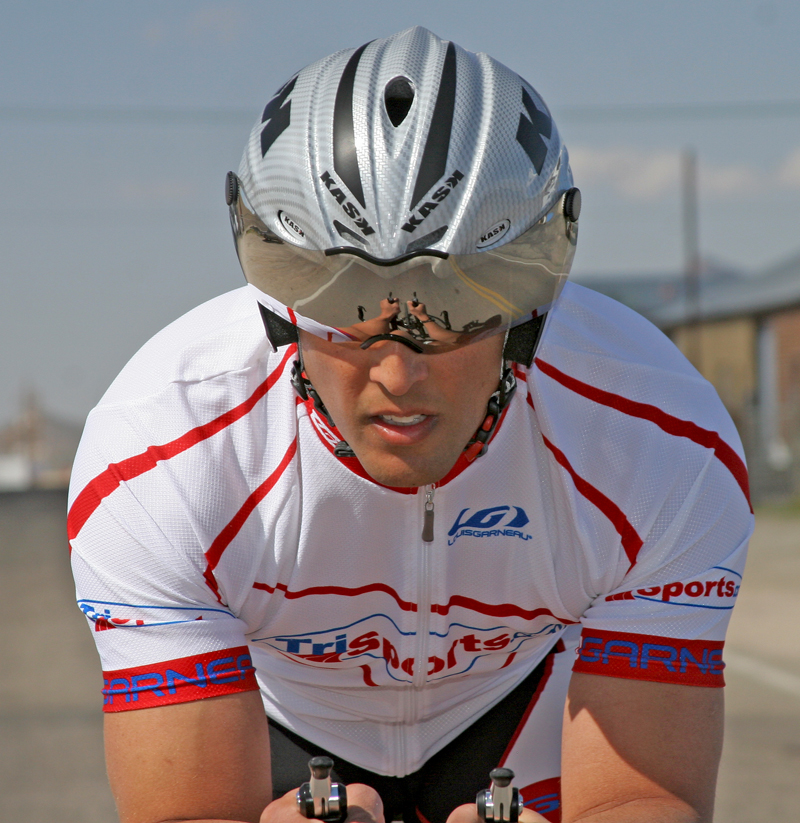By Tom Demerly for TriSports.com.
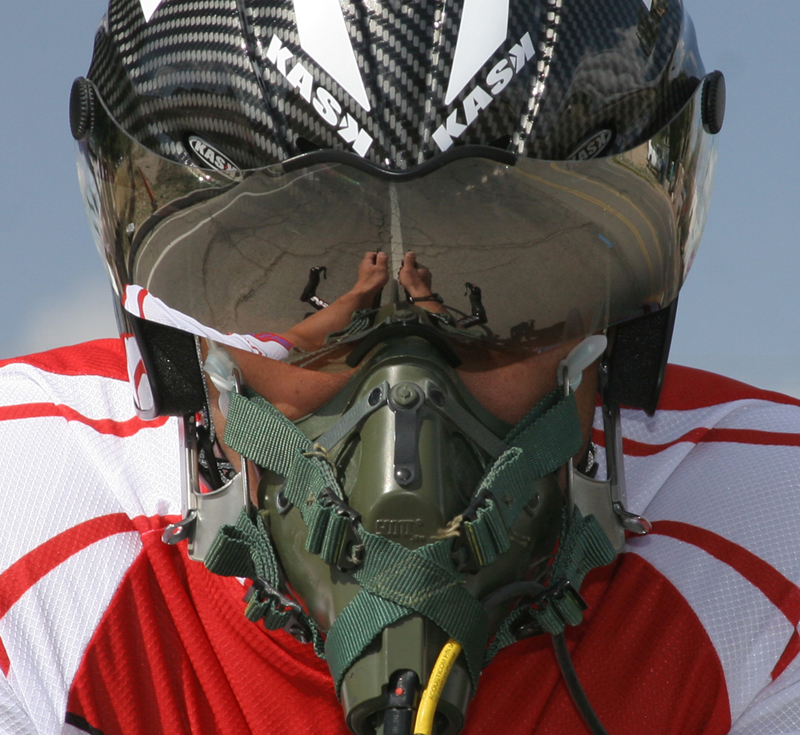
Italian helmet manufacturer KASK has introduced their new K.31 Crono aerodynamic helmet to the U.S. market. KASK, located 37 miles from Milan, Italy in Chiuduno, makes helmets for cycling, skiing, alpine climbing and industrial applications. The 20 year old company does all its own manufacturing in Italy, much of it by hand. Their cycling helmets are revered by European pro cycling teams and their alpine helmets have gained a reputation for performance among European mountain guides.
The KASK K.31 Crono uses a slightly different tail design than other aero helmets. The tail of the helmet forms a vertical “fin” like the tail of an aircraft. This may offer some advantage when a rider lowers their head, as with reading a cyclometer or reaching for a bottle. Some other aero helmet designs feature a more conical tail fairing, potentially creating more drag in the head-down orientation.
The K.31 is built on the platform of KASK’s K.10 DIECI road helmet. The K.31 Crono uses the internal design of the K.10 DIECI with an aerodynamic shell co-molded onto the outside. If you wear the KASK K.10 DIECI as a road helmet, and some pro teams do, switching to the K.31 aero helmet means the aero helmet will fit and feel exactly the same.

Using a conventional road helmet chassis for the K.31 Crono is a strong idea since it fits and feels like a road helmet. The helmet uses the KASK “Up & Down” adjustment system, an occipital lobe retainer that extends around the back of the helmet similar to other cycling helmets like Bell and Giro. A big improvement over Bell and Giro is the hinge on each side of the retainer to fit the helmet on different head shapes or facilitate a ponytail. The Up & Down system stabilizes the helmet on the head and improves fit, preventing it from moving when you hit rough roads, during flying mounts in T1 or are running in the transition area. The hinges on the Up & Down System also move with you, so when you change the angle of your head the brace at the back of your head moves too. This angle-adjustable, pivoting retention system works better than any other helmet retention system I’ve used, and is more comfortable once adjusted also.

Hatband adjustment for the helmet is done with a ratcheting wheel that rotates clockwise and counterclockwise to tighten and loosen circumferential fit. You can adjust the helmet easily with one hand while riding.
A lot of practical thought went into this chinstrap. The section under your chin uses smooth “Eco-Leather” . This non-abrasive synthetic is more comfortable than a traditional nylon webbing chinstrap. The chin strap does not rub you raw or produce raised bumps under your shin when you sweat heavily. The buckles under the ear are self-adjusting and help keep the chin strap in the right orientation under your ear for best helmet retention in a severe crash. When you wear this helmet on a hot day the benefit is obvious- and welcome.
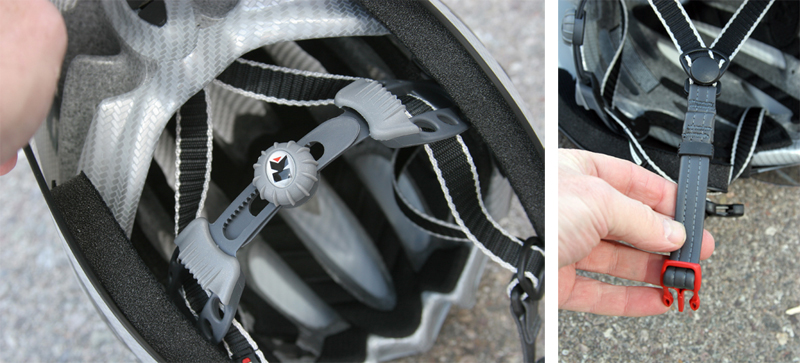
Like many helmets their is a structural polystyrene cage molded inside the EPS foam crush chassis. This holds the helmet together in the event of a severe impact providing protection from secondary hits. The interior pads of the helmet use Coolmax fabric to wick perspiration away from the skin.
Speaking of perspiration: A criticism of most helmets is poor management of perspiration flowing into the eyes from the forehead. The K.31 Crono is no exception. The KASK K.31 Crono and the K.10 DIECI both have three small points at the front. This funnels sweat down your nose and eventually, into your eyes. On a long climb in hot weather this is awful. Several aftermarket sweatbands such as the Sweat Gutr prevent this, but it is one more thing to put on in a triathlon. Helmet manufacturers need to be more proactive about keeping perspiration out of our eyes.
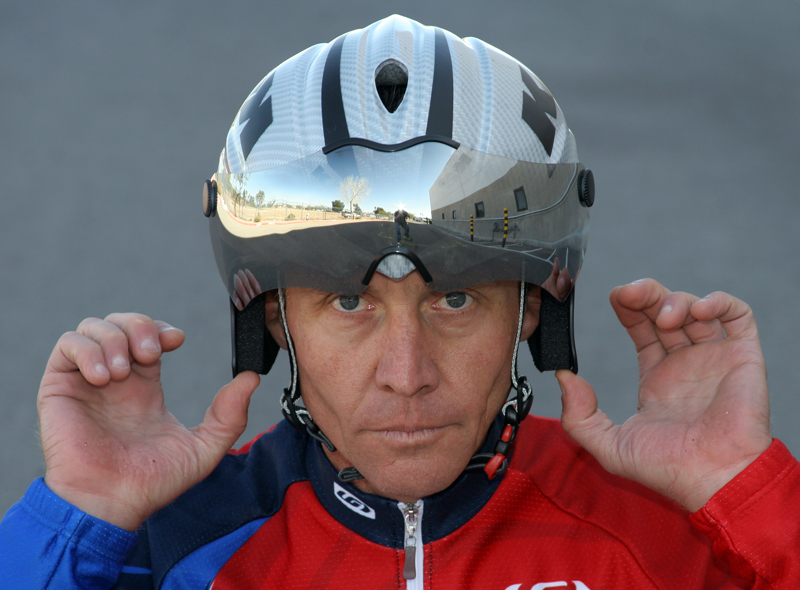
The visor on the K.31 Crono is the best design I’ve used so far. Like a motor racing or fighter pilot’s helmet the visor hinges upward on the fly with one hand. This is useful while taking nutrition or drinking from large water bottles on the fly. Aero helmets that use a non-moving visor lack the ability to raise the visor while riding. The visor on the K.31 Crono is also removable. The pivots unthread from the helmet, you remove the visor, then re-thread back in place to plug the hole. If you notice the optical quality of the visor seems oddly good it is because a major optics manufacturer makes the visor for KASK. The helmet comes with a mirrored, tinted visor with a roughly G15 color-neutral gray tint. This visor doeseffectively replace high end sunglasses on the bike with similar optical quality and very low aspherical distortion. Since using a visor on an aero helmet makes the helmet much more aerodynamic it’s important to have a good one- and this one is the best.

The arrangements of vents on the KASK K.31 Crono is good with a large chevron-shaped vent at the top of the helmet. This vertical vent facilitates heat rising out of the helmet when you are going slow, and the chevron shape helps produce a venturi effect at higher speeds. Great design.
The underside of the fairing on the KASK K.31 is open, not faired-in as it is on the Spiuk Kronos. Closing the underside of the the helmet tail improves aerodynamics, especially in the head down position.
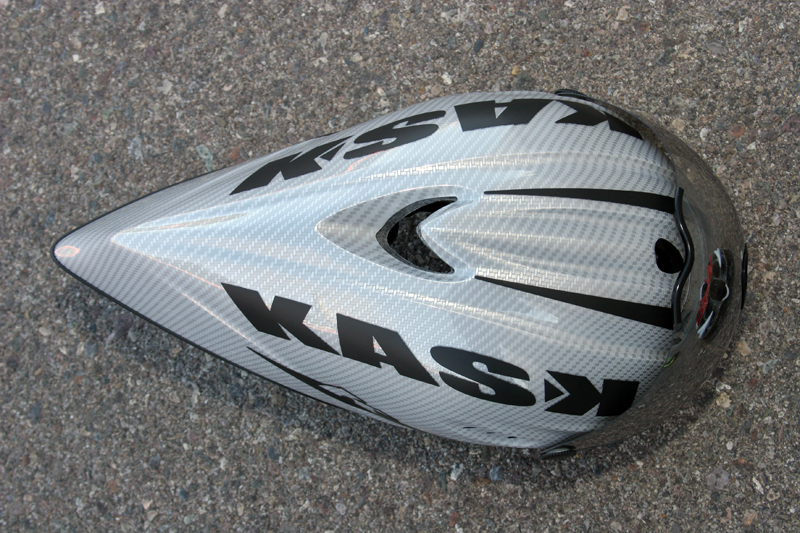
Triathletes need an aero helmet that can be pulled on and off quickly in transition and the KASK K.31 Crono is perfect for quick transitions. The ear fairings are flexible enough to pull to the helmet on and off quickly.You can adjust the helmet to full-open with the rotating knob in the back, pull it on very quickly in transition and reach back to snug it up once you are out of T1 for a precise fit.
Finish and assembly quality on the K.31 Crono is better than most of the other aero helmets I’ve used, and I’ve used most of them. There are two colors in the KASK K.31, a white carbon-fiber look pattern and a black carbon fiber look pattern.
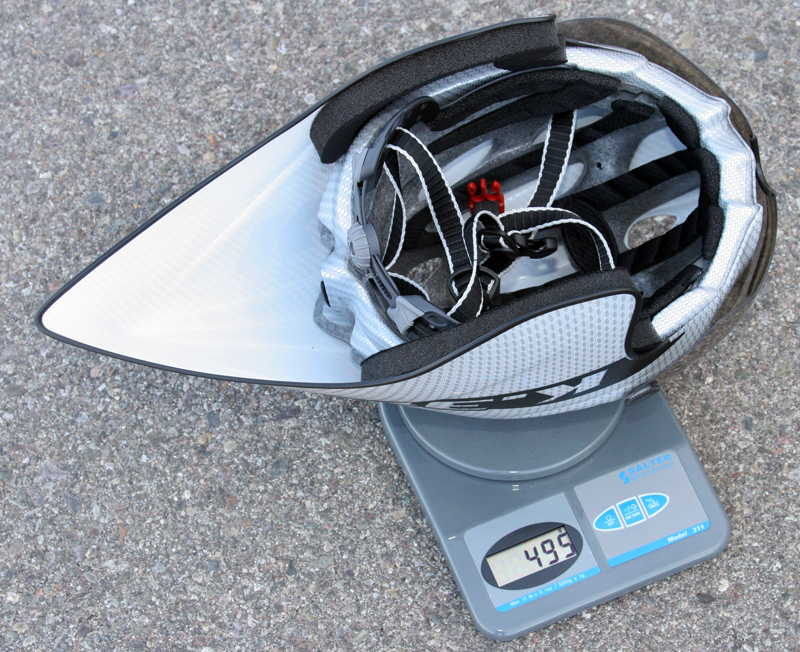
The helmet packs a lot of features into its 495 gram weight but it isn’t a lightweight leader. The KASK website claims 280 grams helmet weight. That is incorrect. The features on the helmet are so good though I’ll trade a little weight for a great retention system, superior comfort and protection and the best visor design I’ve tried.
The helmet is sold in size name “U”, presumably for “universal”. We fit-tested it on a 7.5 hat size male and two very small females to see if the size range is truly universal. It is. The helmet adjusted precisely across all helmet size ranges. That’s impressive. The adjustable feature means triathlon clubs can order a few of these and all members can use them on race day regardless of head size. It also means if you order the helmet from an online retailer it will fit when you get it.
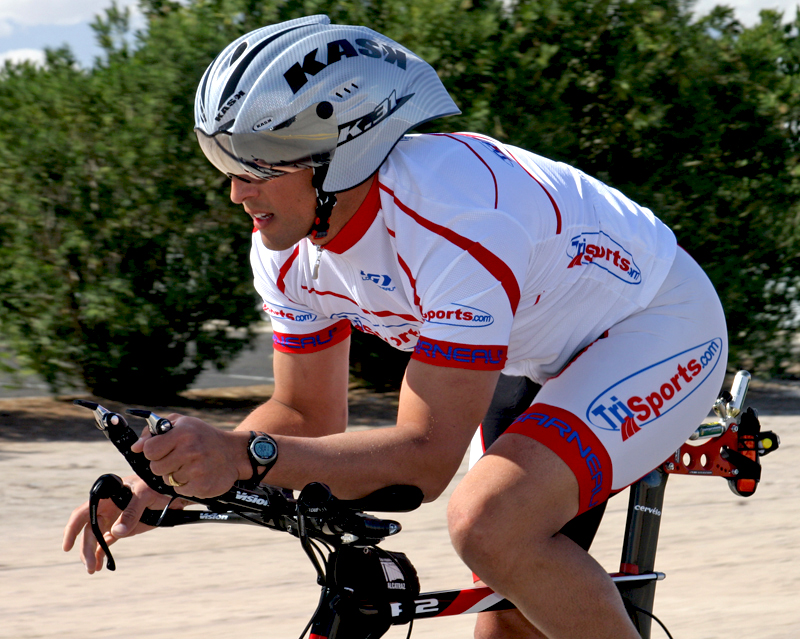
KASK did a good job of including a number of details such as precise fit adjustment, a very wide size range, a more comfortable chinstrap, the best visor in the category, extremely comfortable and secure fit across a wide range of head shapes and excellent finish on the K.31 Crono. The few nicks against it such as the non-faired underside of the tail, the lack of an effective sweat management system and relatively heavy weight don’t detract much from the helmet. It’s still very impressive. At $349.99 it is more expensive than the Lazer Tardiz, Giro Selector, Bell Javelin Giro Advantage 2, Gray Aerodome and all of the Louis Garneau helmets but arguments can be made the extra cost is worth it.
